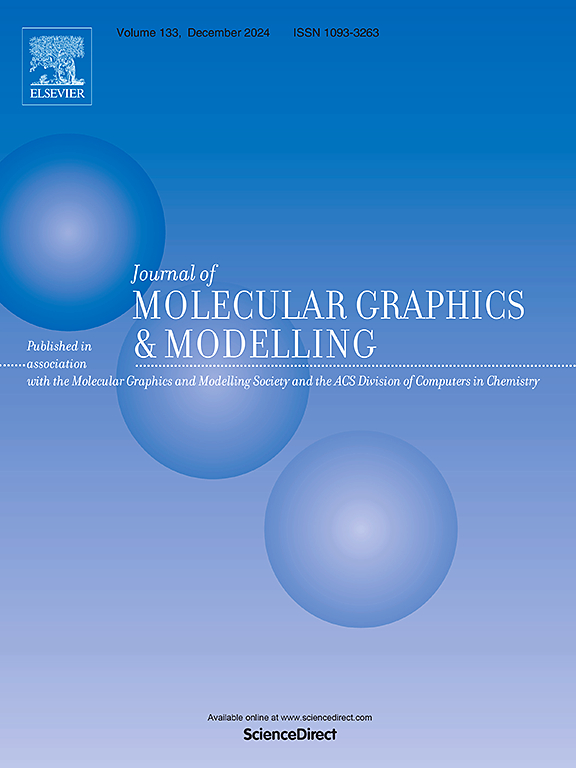Tuning charge transport in polydopamine tetramers via oxidation state and orientation in supramolecular junctions with gold contacts: An ab initio DFT study
IF 2.7
4区 生物学
Q2 BIOCHEMICAL RESEARCH METHODS
引用次数: 0
Abstract
This work presents a comprehensive computational investigation of gold-polydopamine supramolecular junctions and their electronic properties using density functional theory (DFT) and non-equilibrium Green's functions (NEGF) methodology. Non-covalent interactions between gold and PDA models are described in the slab configuration, and the molecular junction. By modulating the oxidation state, molecular structure, and surface arrangements of the PDA model, we demonstrate the tunability of the electronic structure, which is promising for application in nanodevices. Calculations reveal either metallic or n-type semiconducting behaviour depending on the oxidation state, contrasting the standard n-type characteristics of the PDA. While catechol-PDA shows an n-type semiconductor behaviour both on single Au electrodes and in the supramolecular junction configuration, quinone-PDA exhibits metallic characteristics. Moreover, magnitudes of transmission vary significantly with the structure of the PDA model. Overall, this work advances the understanding of tuning PDA electronics through interfacing with gold contacts.

聚多巴胺四聚体在金接触超分子连接中的氧化态和取向调控电荷输运:从头算DFT研究
本研究利用密度泛函理论(DFT)和非平衡格林函数(NEGF)方法对金-聚多巴胺超分子结及其电子特性进行了全面的计算研究。金和PDA模型之间的非共价相互作用在平板结构和分子结中被描述。通过调制PDA模型的氧化态、分子结构和表面排列,我们证明了电子结构的可调性,这在纳米器件中有很大的应用前景。计算揭示了金属或n型半导体行为取决于氧化态,对比了PDA的标准n型特征。儿茶酚- pda在单Au电极和超分子结结构上都表现出n型半导体行为,而醌- pda则表现出金属特征。此外,传输幅度随PDA模型的结构而显著变化。总的来说,这项工作提高了通过与金触点接口调谐PDA电子器件的理解。
本文章由计算机程序翻译,如有差异,请以英文原文为准。
求助全文
约1分钟内获得全文
求助全文
来源期刊

Journal of molecular graphics & modelling
生物-计算机:跨学科应用
CiteScore
5.50
自引率
6.90%
发文量
216
审稿时长
35 days
期刊介绍:
The Journal of Molecular Graphics and Modelling is devoted to the publication of papers on the uses of computers in theoretical investigations of molecular structure, function, interaction, and design. The scope of the journal includes all aspects of molecular modeling and computational chemistry, including, for instance, the study of molecular shape and properties, molecular simulations, protein and polymer engineering, drug design, materials design, structure-activity and structure-property relationships, database mining, and compound library design.
As a primary research journal, JMGM seeks to bring new knowledge to the attention of our readers. As such, submissions to the journal need to not only report results, but must draw conclusions and explore implications of the work presented. Authors are strongly encouraged to bear this in mind when preparing manuscripts. Routine applications of standard modelling approaches, providing only very limited new scientific insight, will not meet our criteria for publication. Reproducibility of reported calculations is an important issue. Wherever possible, we urge authors to enhance their papers with Supplementary Data, for example, in QSAR studies machine-readable versions of molecular datasets or in the development of new force-field parameters versions of the topology and force field parameter files. Routine applications of existing methods that do not lead to genuinely new insight will not be considered.
 求助内容:
求助内容: 应助结果提醒方式:
应助结果提醒方式:


